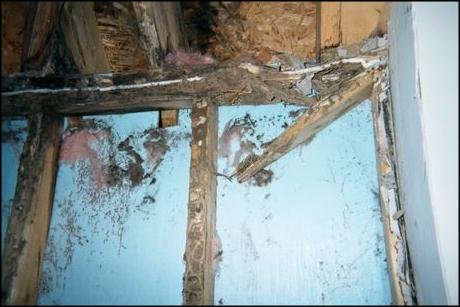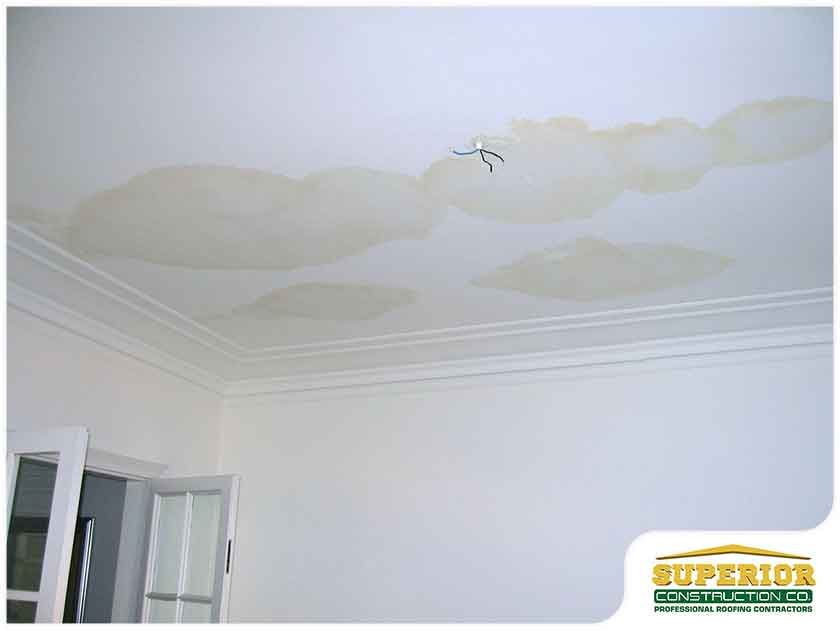Techniques to Identify and Fix Water Stains on Walls
Techniques to Identify and Fix Water Stains on Walls
Blog Article
Just how do you feel when it comes to Indicators of Water Damage Behind Walls?

Water discolorations on walls are not enjoyable to the eyes. Your home ought to be without discolorations on the walls, roofing system, or floorings. That is the perfect state of a home and also its structures. Often it seems virtually unpreventable to experience water stains on wall surfaces in houses.
Home owners residing in damp areas continuously take care of the fear of water stains on walls. That doesn't have to be the situation for you. With exact and also well-shaped details on the sources of water discolorations and also punctual repair service procedures, you will certainly always be a step ahead of such events. This post guarantees to be an useful guide for you.
3 Common Root Causes Of Water Discolorations on Wall Surfaces
In contrast to common belief, water discolorations on walls do not always stem from inadequate building materials. There are several sources of water stains on wall surfaces. These consist of:
Damp
When hot moist air meets completely dry cold air, it causes water beads to base on the wall surfaces of buildings. This takes place in bathroom and kitchens when there is heavy steam from food preparation or showers. The water beads can tarnish the surrounding walls in these parts of your house and also spread to other areas.
Wet or condensation affects the roofing and also wall surfaces of buildings. This triggers them to show up darker than various other areas of the house. When the wall surface is wet, it develops an ideal environment for the growth of fungi and also microorganisms. These might have unfavorable results on health and wellness, such as allergic reactions and respiratory system disorders.
Poor Water drainage
When making a building strategy, it is important to guarantee adequate water drainage. This will certainly prevent water from permeating into the walls. Where the drainage system is blocked or missing, underground moisture builds up. This web links to excessive dampness that you see on the walls of your building.
So, the leading cause of wet walls, in this situation, can be a bad drain system. It can also be because of poor monitoring of sewage pipelines that run through the building.
Pipeline Leaks
Many residences have a network of water pipes within the wall surfaces. This ensures that the pipes are faraway from the reach of destructive rodents. It constantly increases the feasibility of such pipelines, as there is little oxygen within the walls. This dissuades corrosion.
Yet, a drawback to this is that water leakage impacts the walls of the building as well as triggers extensive damages. A telltale sign of damaged pipelines is the look of a water discolor on the wall.
Pro Tip
A houseplant in your house likewise enhances its humidity. So, if your house is currently humid, you might wish to introduce houseplants with marginal transpiration. An example of ideal houseplants is succulents.
Water Spots on Wall Surface: Repair Work Tips
When dealing with water stains, home owners would generally desire a fast solution. Yet, they would certainly soon recognize this is detrimental as the water spots reoccur. Right here are a couple of helpful ideas that will certainly guide you in the repair service of water discolorations on wall surfaces:
Verdict
Although no one wishes to have water stains on walls in their house, it can occur to the most effective of us. This article provides you take advantage of, as you now recognize just how to handle this accident if it does take place.
It is always best to recruit expert services to assist deal with the damages in your home.
In some cases it seems practically unpreventable to experience water spots on wall surfaces in residences.
In contrast to preferred belief, water stains on walls do not always stem from poor building materials. There are several causes of water stains on wall surfaces. The water beads can tarnish the bordering walls in these parts of your home and spread to various other locations.
Right here are a few valuable ideas that will guide you in the fixing of water spots on walls:
CHECKING FOR WATER DAMAGE
Water damage can be costly, and it may begin before you even notice the first signs of trouble. Water damage can cause mold and mildew in your walls and floors, which can create an abundance of health concerns for your family. It can also lead to costly repairs of various appliances and general home fixtures. To avoid the pricey consequences of water damage, here are Warner Service’s top 5 places you should check:
The walls – The easiest place to spot the beginnings of water damage is on the walls and ceilings of your home. If water damage is present, there will most likely be water stains, especially around the windows and doorframes, and/or cracks in the drywall. If a stain looks unusual (discolored to brown, black or gray, raised texture), has a swollen appearance or is soft to the touch, contact a professional immediately. The pipes – To avoid water damage, consistently check the pipes in your kitchen (especially the dishwasher and ice maker), bathrooms, laundry room (specifically washing machines) and basement for corrosion, leaks and water stains. Pay special attention to where the pipes connect in your home and the location of caulking around the bathroom fixtures, including toilets, sinks, showers and tubs. Missing or loose caulking and grout could be signs of leaking water. This seepage can also quickly cause mold and rust, so double check your water heater and tank for wet spots on the floor. The floor – Water damage is very easy to spot on the floor. Look for any warping or buckling of the material, especially in the basement. If your home has wood flooring, look for bright white or dark stains. If your home has carpeting, keep it dry and clean. A damp carpet that smells of mold could cause water damage and health problems. To avoid this, consider installing floor pans under your appliances to help prevent damages from small, slow and undetected leaks. The basement and attic – If your basement or attic smells odd check for mold and mildew around the area, especially the valley where the roof meets. While you are inspecting those areas, check for wall cracks, floor stains, rust and dampness in the insulation. If you live in a colder and/or rainier climate, perform routine checks for water damage from melting snow or ice and rain. The exterior – Check the roof for damaged flashing and missing, cracked or curled shingles. There should also be no standing water anywhere outside your home. This could be caused by puddles, leaky rain gutters or hoses, poor drainage, or short gutter spouts. Invest in a sump pump system or water flow monitoring system, and perform routine maintenance on these outdoor appliances to avoid indoor water damage.

I was introduced to that report about Water Stains on Walls from someone on a different domain. If you please set aside a second to promote this blog if you appreciated it. Thanks for your time. Visit us again soon.
Booking Report this page